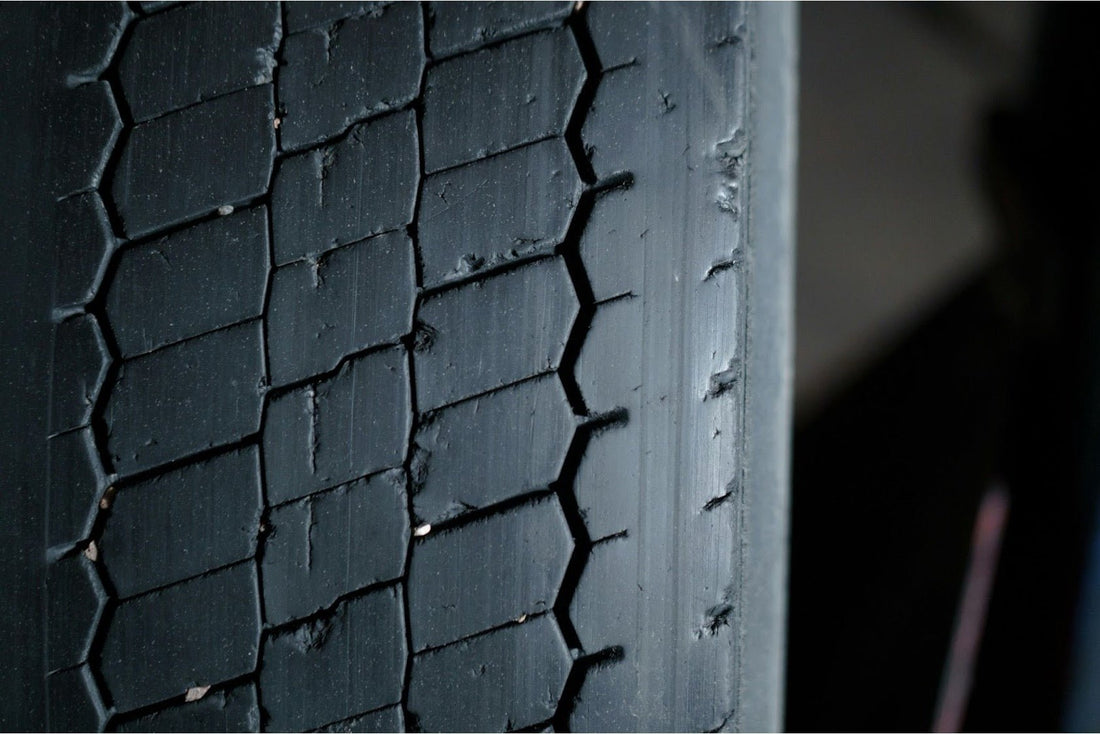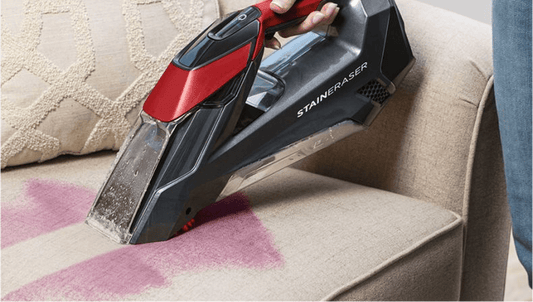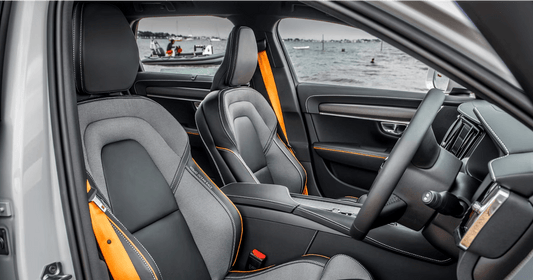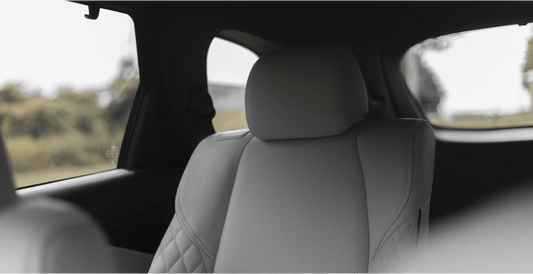Die wichtigsten Erkenntnisse
- Überprüfen Sie den Reifendruck monatlich mit einem zuverlässigen Messgerät. Ein falscher Reifendruck ist die Hauptursache für ungleichmäßigen Verschleiß und kann die Lebensdauer des Reifens um bis zu 25 % verkürzen.
- Planen Sie alle 9.600 Kilometer oder nach dem Überfahren von Schlaglöchern/Bordsteinen eine Achsvermessung ein, um Kantenverschleiß und Fahrprobleme zu vermeiden.
- Wechseln Sie Ihre Reifen alle 5.000 bis 7.000 Meilen gemäß dem für Ihre Antriebskonfiguration richtigen Muster.
- Überprüfen Sie die Aufhängungskomponenten (Stoßdämpfer, Federbeine, Buchsen) jährlich, da verschlissene Teile den Kontakt der Reifen mit der Straße direkt beeinflussen.
- Tools wie die AutoPump von Ordiniq halten den optimalen Reifendruck unabhängig von Temperaturschwankungen automatisch aufrecht.
Erkennen von Mustern ungleichmäßigen Verschleißes
Durch frühzeitiges Erkennen ungleichmäßiger Abnutzungsmuster können Sie Probleme beheben, bevor die Reifen unsicher werden oder ausgetauscht werden müssen.
Es gibt verschiedene Verschleißmuster, die Ihr Fahrzeug beeinträchtigen können. Kantenverschleiß deutet auf Spurfehler oder falsche Sturzeinstellungen hin, Mittenverschleiß auf zu hohen Reifendruck und Ausfransungen (Sägezahnmuster entlang der Profilblöcke) auf Fehlausrichtung oder Probleme mit der Federung.
Eine Aushöhlung oder Ausbuchtung (runde Vertiefungen im Profil) ist häufig die Folge verschlissener Stoßdämpfer oder einer unsachgemäßen Auswuchtung der Räder.
|
Ordiniq AutoPump: Ihr Pannenhelfer im Taschenformat Schließen Sie sich über 10.000 Autofahrern an, die sich nie wieder Sorgen um platte Reifen machen müssen Warum die AutoPump von Ordiniq unverzichtbar ist
Was Kunden sagen ★★★★★ „Ich war zunächst sehr skeptisch, ein neues Produkt wie Autopump bei meinem Ford Focus (Baujahr 2018) zu verwenden. Aber nachdem ich wegen eines Nagels einen platten Reifen hatte, konnte ich ihn schnell wieder aufpumpen und in eine Werkstatt fahren, um ihn reparieren zu lassen. Von mir gibt es definitiv einen Daumen hoch!“ – Gregg D., Bristol, Großbritannien Testen Sie es 90 Tage lang ohne Risiko Erleben Sie die AutoPump sorgenfrei. Sollte sie Sie innerhalb von 90 Tagen nicht vor einem Reifenschaden bewahren, erstatten wir Ihnen den Kaufpreis – ganz ohne Fragen. KOSTENLOSER BONUS: Reifendruckkontrollkappen (Wert: 19,99 £) |
Hauptursachen für ungleichmäßigen Reifenverschleiß
Falscher Reifendruck ist nach wie vor die häufigste Ursache für ungleichmäßigen Verschleiß. Reifen mit zu geringem Druck biegen sich übermäßig, wodurch die Außenkanten schneller verschleißen, während sich zu stark aufgepumpte Reifen in der Mitte wölben und so zu beschleunigtem Mittelverschleiß führen. Eine Fehlausrichtung beeinträchtigt den Kontakt der Reifen mit der Straße und kann zu schnellem Verschleiß an einer Kante führen. Probleme mit der Aufhängung, darunter verschlissene Stoßdämpfer, Federbeine oder Buchsen, führen zu übermäßiger Reifenbewegung und ungleichmäßigem Straßenkontakt. Weitere Faktoren sind unsachgemäßes Auswuchten der Räder, aggressives Fahrverhalten und eine Überladung des Fahrzeugs über die empfohlenen Gewichtsgrenzen hinaus.
Top-Lösungen zur Behebung von Reifenverschleiß
1. Richtiges Aufpumpen
Schon ein zu niedriger Reifendruck von 20 % kann die Lebensdauer des Reifens um bis zu 15 % verkürzen. Zu hoher Reifendruck hingegen führt zu unruhigem Fahrverhalten und konzentriertem Reifenmittelverschleiß. Überprüfen Sie Ihren Reifendruck monatlich und vor längeren Fahrten. Achten Sie stets darauf, dass Ihre Reifen kalt sind, um genaue Messwerte zu erhalten.
Hier ist ein Szenario, das Ihnen begegnen könnte:
Sarah bemerkte, dass die Hinterreifen ihres SUVs an beiden Kanten abgenutzt waren. Ein Blick ins Handbuch verriet ihr, dass sie 6 PSI unter dem empfohlenen Druck gefahren war. Nach Korrektur und monatlichen Kontrollen stabilisierte sich das Verschleißmuster, und ihr nächster Reifensatz hielt 72.000 Kilometer, verglichen mit 51.000 Kilometern zuvor.
Beachten Sie immer den vom Hersteller empfohlenen Druck. Sie finden ihn im Handbuch Ihres Fahrzeugs oder am Türrahmen des Fahrers.
Intelligente Tools wie die AutoPump von Ordiniq können unabhängig von Temperaturschwankungen automatisch den optimalen Druck aufrechterhalten, sodass das Rätselraten ein Ende hat.
2. Achsvermessung und Auswuchten
Eine korrekte Achsvermessung ist dann gegeben, wenn alle vier Räder senkrecht zum Boden und parallel zueinander stehen. Eine Fehlausrichtung entsteht häufig durch Schlaglöcher, Bordsteinkanten oder normalen Fahrwerksverschleiß. Anzeichen hierfür sind beispielsweise ein seitliches Ziehen des Fahrzeugs, ein außermittiges Lenkrad oder ungleichmäßiger Reifenverschleiß an den Innen- oder Außenkanten.
Eine professionelle Achsvermessung sollte alle 12 Monate oder 16.000 Kilometer sowie unmittelbar nach jedem größeren Aufprall durchgeführt werden. Professionelle Dienstleistungen korrigieren drei wichtige Aspekte:
- Sturz: Die vertikale Neigung der Räder (von vorne gesehen nach innen oder außen)
- Vorspur: Ob die Räder von oben betrachtet nach innen oder nach außen zeigen
- Nachlauf: Die Neigung der Lenkachse nach vorne oder hinten
Das Auswuchten ergänzt die Achsvermessung, indem es eine gleichmäßige Gewichtsverteilung auf jedes Rad gewährleistet und so Vibrationen und fleckigen Verschleiß verhindert. Lassen Sie die Räder bei der Montage neuer Reifen und bei Vibrationen auswuchten.
3. Regelmäßiger Reifenwechsel
Wechseln Sie Ihre Reifen alle 8.000–11.000 Kilometer, je nachdem, ob Ihr Fahrzeug über Front-, Heck- oder Allradantrieb verfügt:
- Bei Frontantrieb: Vorderreifen hinten auf entgegengesetzte Seiten verschieben, Hinterreifen auf gleicher Seite nach vorne verschieben
- Bei Heckantrieb: Hinterreifen vorne auf entgegengesetzte Seite verschieben, Vorderreifen hinten auf die gleiche Seite verschieben
- Bei Allradantrieb: Alle Reifen auf gegenüberliegende Seiten und Achsen kreuzen
Überprüfen Sie Ihre Reifen beim Reifenwechsel gründlich auf Schäden, Ablagerungen und Abnutzungsmuster, die auf andere Probleme hinweisen könnten. (Bild mit freundlicher Genehmigung von AutoSupply)
Schritte zur Vermeidung zukünftiger Reifenprobleme
Bei regelmäßigen Inspektionen sollte die Profiltiefe mit dem 20-Pence-Test überprüft werden (stecken Sie eine 20-Pence-Münze in das Profil; wenn das äußere Band sichtbar ist, muss der Reifen ausgetauscht werden).
Wählen Sie Reifen, die Ihren Fahrbedingungen und Ihrem Fahrzeug entsprechen. Hochleistungsreifen bieten besseren Grip, nutzen sich jedoch normalerweise schneller ab als Tourenreifen.
Beobachten und passen Sie Ihr Fahrverhalten an, da aggressives Beschleunigen, starkes Bremsen und schnelle Kurvenfahrten den Verschleiß drastisch erhöhen. Achten Sie auf eine ausgewogene Lastverteilung im Fahrzeug, da Überladung die Belastung von Reifen und Fahrwerk erhöht.
Ordiniqs Empfehlung zur Reifenlebensdauer
Die AutoPump von Ordiniq ist ein intelligentes Gerät, das den Reifendruck automatisch in Echtzeit überwacht und anpasst und dabei Temperaturschwankungen ausgleicht, die den Druck bei jeder Änderung von 10 °C um bis zu 1 PSI beeinflussen können.
Die AutoPump maximiert die Reifenlebensdauer, optimiert die Kraftstoffeffizienz und erhöht die Sicherheit, ohne dass ein manueller Eingriff erforderlich ist.
Während herkömmliche Wartung von der Sorgfalt des Fahrers abhängt, bietet die AutoPump kontinuierlichen Schutz vor der häufigsten Ursache für vorzeitigen Reifenverschleiß. Das macht sie zu einer idealen Investition für Fahrzeugbesitzer, denen die Optimierung von Reifenleistung und -lebensdauer am Herzen liegt.
Häufig gestellte Fragen (FAQ)
Wie oft sollten Reifen rotiert werden?
Die meisten Hersteller empfehlen einen Reifenwechsel alle 8.000–11.000 Kilometer. Bei Fahrzeugen mit Frontantrieb kann dies jedoch häufiger erforderlich sein. Die Hinweise zu Ihrem Fahrzeug finden Sie in der Bedienungsanleitung.
Was ist der ideale Reifendruck?
Der ideale Druck variiert je nach Fahrzeug und ist in der Bedienungsanleitung oder auf dem Türpfostenaufkleber angegeben. Für genauere Werte prüfen Sie den Druck immer bei kalten Reifen.
Welchen Einfluss hat die Achsvermessung auf die Lebensdauer der Reifen?
Eine korrekte Spureinstellung gewährleistet einen gleichmäßigen Kontakt mit der Straße und verhindert so einen beschleunigten Verschleiß bestimmter Reifenbereiche. Schon eine Fehlstellung von 1–2° kann die Lebensdauer des Reifens um Tausende von Kilometern verkürzen.
Wann ist der beste Zeitpunkt, meine Reifen zu wechseln?
Ersetzen Sie Ihre Reifen, sobald die Profiltiefe 1,6 mm (das gesetzlich vorgeschriebene Minimum) erreicht hat, oder früher, wenn Sie Risse, Beulen oder anhaltenden Druckverlust feststellen. Im Winter kann ein Austausch bei 3 mm erforderlich sein, damit Ihre Reifen auch bei Nässe gut funktionieren.
Wie kann ich feststellen, ob meine Federung Reifenverschleiß verursacht?
Gewölbte oder schalenförmige Verschleißmuster deuten typischerweise auf verschlissene Stoßdämpfer oder Federbeine hin. Ein Aufpralltest an jeder Fahrzeugecke kann helfen, schwache Fahrwerkskomponenten zu identifizieren, die ausgetauscht werden müssen.
Hat der Fahrstil wirklich Einfluss auf den Reifenverschleiß?
Starkes Beschleunigen, Bremsen und Kurvenfahren können den Verschleiß um bis zu 30 % erhöhen. Sanftes, gemäßigtes Fahren verlängert die Reifenlebensdauer deutlich und verbessert den Kraftstoffverbrauch.
Wie kann Ordiniq bei der Reifenwartung helfen?
Bei Ordiniq sorgt unsere AutoPump für optimalen Reifendruck, unabhängig von Temperaturschwankungen oder langsamen Leckagen. Das System beseitigt die häufigste Ursache für ungleichmäßigen Verschleiß durch kontinuierliches, präzises Druckmanagement.




